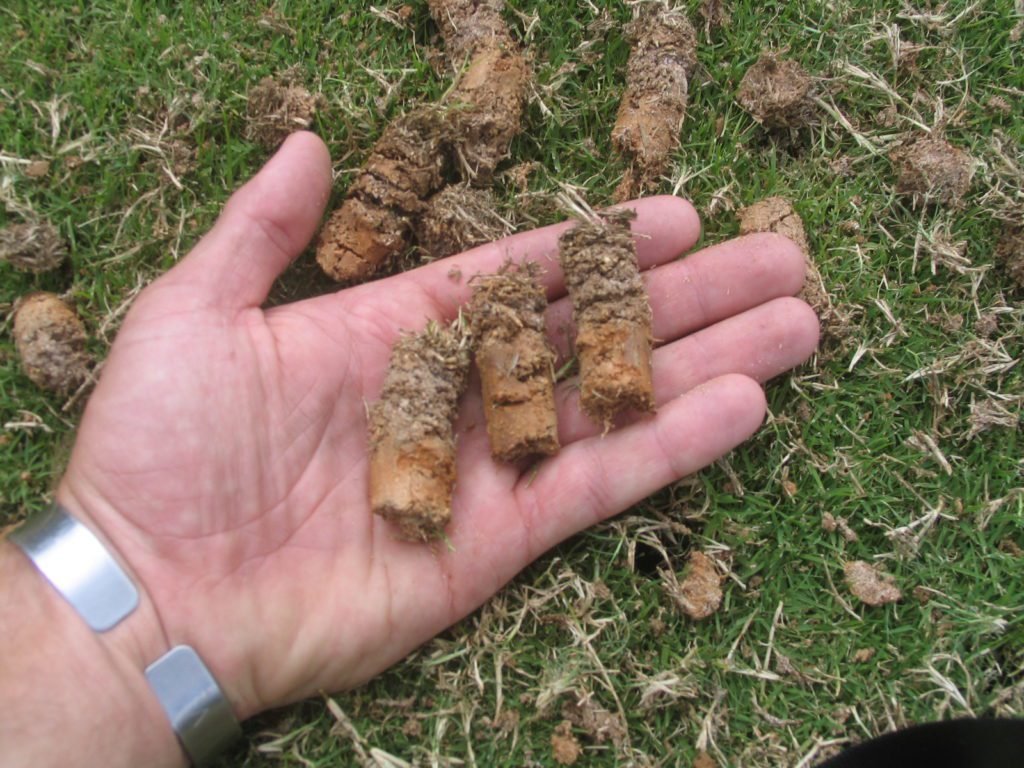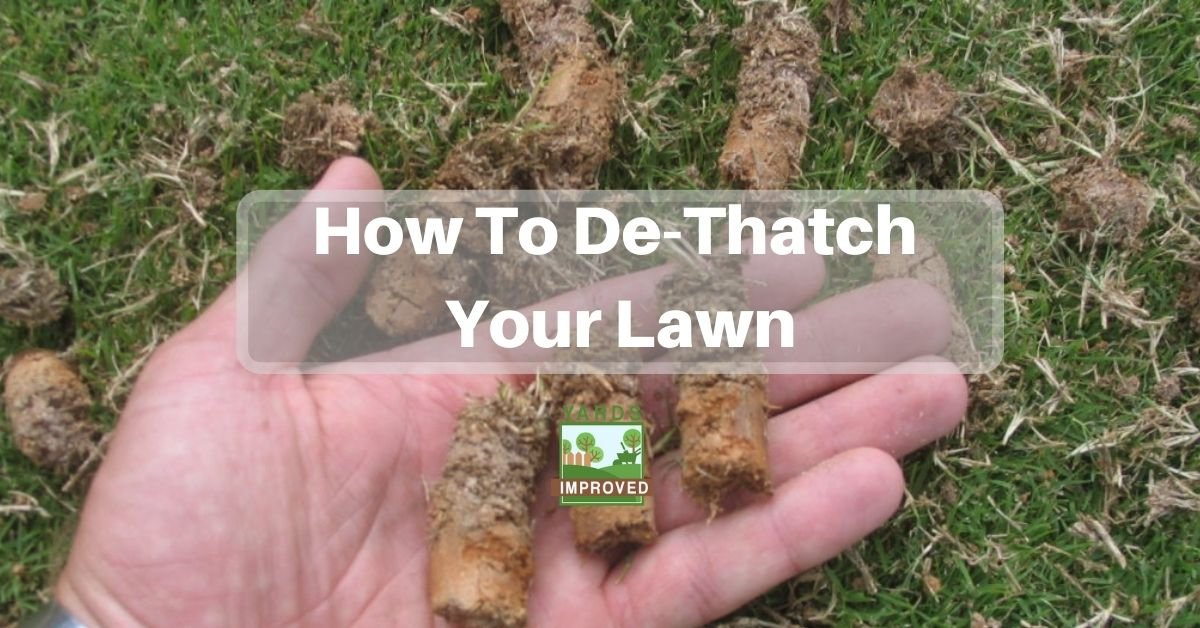Getting a perfect lawn, or even one that’s thriving, requires a lot of work. There are steps to take throughout the year to help your grass stay a healthy green for the whole season. With careful attention, you can have a vibrant-looking lawn year after year, but it does take knowledge and work. One of the important steps to take is dethatching the lawn at appropriate times.
What Is Thatch?
It’s normal for bits of grass to remain on your lawn. Some die naturally and others fall to mowing. Normal raking may be get most of the fallen grass, but over time there’s a buildup of this old organic material.
Of course, it’s not all bad having a bit of dead grass. It gets broken down by bacteria and can help fertilize the grass that’s still living.
Over time, though, this natural breakdown can fall behind. There is too much dead material for the bacteria to handle. This buildup is known is thatch.
Why Is Dethatching Important
When that buildup happens, it can block both water and gases in the air from reaching the soil. Both the water and these gases are important to helping your grass grow.
This isn’t a sudden problem and it’s not something you have to deal with every day. It takes time for the thatch to build up to harmful levels. But if it starts getting to ¼ to ½ inch thick, then you could have problem.

Another issue is that when you reseed, the new grass will root in the thatch instead of in the soil. But the thatch doesn’t provide sufficient protection or insulation so this fresh growth is vulnerable and unlikely to survive.
The thatch is also absorbent, but dries out quickly. So even watering can end up wasting the greater part of the water.
All of this leads to a lawn that’s not being properly fed, and you’ll notice patches that lose their color and eventually die.
When To Thatch
If parts of your lawn don’t seem to be growing well, it’s possible you have a thatch problem. But that’s just one reason you could have problems. You can pull up a small “core sample” in that area – just enough so you can see soil. If you have a half-inch or more of thatch on top of your soil, then it’s too much.
It’s also best to dethatch after mowing your lawn to about half as high as normal to more easily pull through the hatch.
The best time of year to dethatch is really any time except spring, when it can damage grass that’s just beginning to come out of its dormant stage. But summer, fall, or winter are perfectly fine for dethatching!
Learn what else you should do in fall to take care of your lawn
How To Use a Thatch Rake
When thatch does build up, there are a couple of ways to clear it out. But once it’s reached that point, it can require more than a regular raking.
Don’t misunderstand; regular raking can help keep thatch at bay or even break it up. However, for tougher job, you need a special thatch rake to do the job. Although it looks like a bow rake, its longer prongs will dig into the thatch and tear it apart.

Pull the thatch rake toward you (as you do with any rake). It’s best to always work in one direction to prevent damage to the roots of the grass.
You can gather up the thatch and compost it for use later as fertilizer.
It’s also good to consider aerating your lawn after dethatching it as well – the two work great together in helping produce healthier grass.
Alternatives to a Thatch Rake
If you have a larger lawn, manually raking it might be quite the chore. That can be true with regular raking, but thatch raking can take even more effort. It’s not that hard, but when compounded over a large property, it adds up.
Many stores that handle lawn-care products will be able to rent you an attachment for a small tractor or ride-on mower that will make the task easier. Just ask them to adjust it ahead of time for your type of grass.

Also, if you’re going to use a dethatcher like this, be aware that it can cut a little deeper into the lawn. Be sure you know where any underground electrical, water, or gas lines are and avoid crossing them where they could be damaged.
And remember that this is a large, heavy tool that’s not going to fit in the trunk of your car. You’ll need to have a pickup or other truck.
Conclusion
Lawn thatch can build up to a point where it becomes harmful to your grass. Dethatching is one step you can take to help keep the lawn healthy. Used in conjunction with aeration and other lawn-care practices, it will help make sure you have a rich, lush lawn to enjoy!









